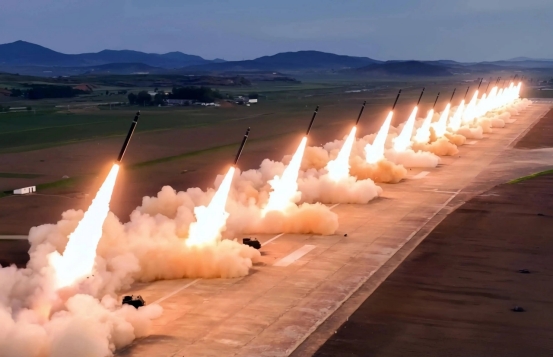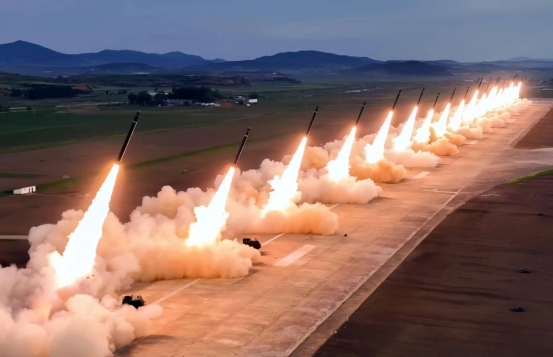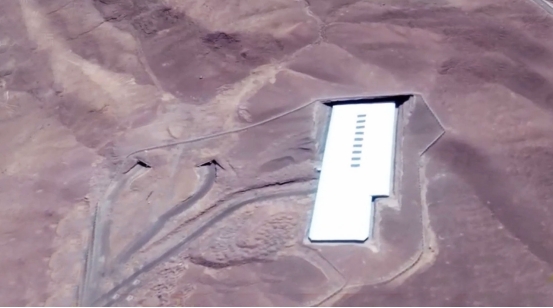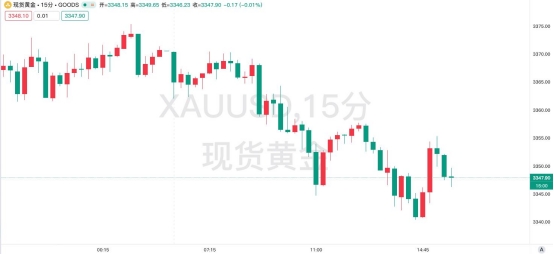The conflict between Israel and Iran escalates! The battle for the Fordow nuclear facility is imminent, and the gold market is holding its breath on the "edge of war"
- 2025年6月23日
- Posted by: Macro Global Markets
- Category: News

The conflict between Israel and Iran escalates! The battle for the Fordow nuclear facility is imminent, and the gold market is holding its breath on the "edge of war"

1. Fordow Nuclear Facility: Israel’s “Intolerable” Threat of War

The Fordow nuclear facility is located deep in the mountains near the Iranian city of Qom, 90 meters underground. It is reinforced with layers of reinforced concrete and granite, and cannot be penetrated by conventional bombs. Since its secret construction in 2002, the facility has become the core hub of Iran's uranium enrichment activities. According to a 2024 International Atomic Energy Agency report, Iran has installed more than 5,000 advanced centrifuges here, with uranium enrichment reaching up to 83.7%, close to weapons-grade levels. Israeli Prime Minister Netanyahu has repeatedly stressed that "the existence of Fordow is a direct threat to Israel's survival" and listed it as a "priority target for destruction."
Israel's technological dilemma and America's war hesitation
The Israeli Air Force currently lacks weapons that can penetrate Ford's defenses. Its Jericho ballistic missiles and GBU-28 bunker busters can only hit targets 30 meters underground. The only viable option is to use the US GBU-57 giant bunker buster (weighing 13.6 tons and able to penetrate 65 meters of rock), but it must be dropped by a US B-2 bomber. However, the Trump administration has doubts about the success rate of the operation - the Pentagon estimates that two GBU-57s must be dropped in succession to effectively destroy the facility, and it may trigger a full-scale retaliation from Iran. As of June 20, the White House has not yet approved the request to join the war. Secretary of State Rubio made it clear that "the United States will not be involved in Israel's unilateral actions", but warned Iran that "any attack on US interests will come at a price."
II. Conflict escalation: the critical point from “limited strikes” to “all-out war”
Iran's retaliation chain has been activated
On June 19, Iran's Islamic Revolutionary Guard Corps launched the 15th phase of the "Real Promise-3" operation, launching a joint missile and drone strike against Haifa and Tel Aviv in Israel, dispatching more than 100 drones to attack the air defense system. The commander-in-chief of the Revolutionary Guard Corps, Salami, warned that "every Iranian facility destroyed by Israel will be retaliated 10 times."
If Fordow is attacked, Iran may take three escalating measures: Energy blockade: Threaten to close the Strait of Hormuz (a channel for 40% of the world's crude oil transportation), pushing up oil prices to more than $120 per barrel; Proxy war: Send 500 "Conqueror-110" missiles (with a range of 250 kilometers) to Hezbollah in Lebanon, covering Tel Aviv; Cyber attack: Launch "Afan Blue"-style hacker attacks on Israel's power grid and financial system, triggering economic panic.
Israel's military adventure and the global economic chain reaction
If Israel acts alone, it may adopt a combined tactic of "bomb-penetrating bombs + ground commando infiltration". Military expert Roches pointed out that the Israeli military must first weaken Ford's defenses through multiple rounds of bombing, and then send special forces into the facility through the blast hole to place explosives.
This action is extremely risky: if the commandos are annihilated, it may trigger a domestic political crisis in Israel; if uranium materials leak in the facility, it will cause regional nuclear pollution. More importantly, the conflict may lead to disruptions in the global supply chain - Iran accounts for 12% of global oil exports, and 40% of its oil revenue is used to support regional proxy forces. Energy supply disruptions may trigger a recession in European manufacturing and a rebound in US inflation.
3. Gold market: Geopolitical premium
Although Israel's strike plan has caused market concerns, gold's reaction on June 20 was relatively flat. As of the early Asian session on June 20, spot gold fluctuated in the range of 3344.59-3370.68 US dollars per ounce, down 0.82%. The market was stuck under the dual pressure of "military adventure" and "policy suppression". This reflects the "risk-averse fatigue effect" - investors are more concerned about the medium- and long-term impact of the conflict on energy inflation and the Fed's policy.

